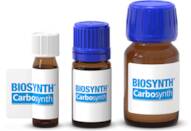
Poly(propylene glycol) - Aveage Mn 2000
CAS : 25322-69-4
Ref. 3D-FP164946
| 5g | À demander | ||
| 10g | À demander | ||
| 25g | À demander | ||
| 50g | À demander | ||
| 100g | À demander |
Informations sur le produit
- 2000Lm
- 3003N
- 3600K
- 3600Z
- 835E
- Emkapyl
- PPG
- Paral
- Poly(1,2-epoxypropane)
- Poly(methyloxirane)
- Voir d'autres synonymes
- Poly[oxy(methyl-1,2-ethanediyl)]α-hydro-ω-hydro)
- Polyoxypropylenediol
- Polypropyleneglycol
- Polypropylenglykol
- Prodiol
- Smc-Ppf
- Smc-Pps
- Smc-Ppt
- Smc-Ppz
- Vittacol
- α-Hydro-ω-hydroxypoly(oxypropylene)
- α-Hydro-ω-hydroxypoly[oxy(methyl-1,2-ethanediyl)]
- α-Hydro-ω-hydroxypoly[oxy(methylethylene)]
Poly(propylene glycol) (PPG) is a polymer that can be used to create artificial skin. It has an average molecular weight of 2000 and can be used in the treatment of burns and other injuries. PPG also has been shown to have thermal expansion properties, which may be due to its ability to absorb water. PPG is most effective when it is dissolved in glycols such as ethylene glycol or propylene glycol, although it can form a gel at concentrations greater than 50%. PPG is not toxic to human cells and does not cause epidermal toxicity. This polymer does not contain any proteins or lipids, but it may form complexes with other substances such as metals or ions. The use of PPG for artificial skin is experimental and has not been approved by the FDA.
Propriétés chimiques
Question d’ordre technique sur : 3D-FP164946 Poly(propylene glycol) - Aveage Mn 2000
Si vous souhaitez demander un devis ou passer commande, veuillez plutôt ajouter les produits souhaités à votre panier, puis demander un devis ou passer commande à partir de votre panier. C'est une méthode plus rapide, plus économique, et vous pourrez bénéficier des remises disponibles ainsi que d'autres avantages





